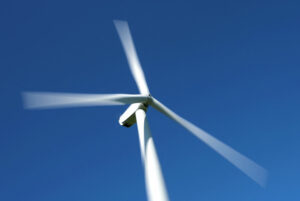By Sheldeen Joy Talavera, Reporter
DENMARK’S Copenhagen Infrastructure Partners (CIP), a global investor in renewable energy infrastructure, is proposing to build a 300-megawatt (MW) onshore wind farm in Nueva Ecija with an estimated cost of P30.5 billion.
In a filing with the Department of Environment and Natural Resources, San Jose Onshore Wind Power Corp., a subsidiary of CIP, said that the proposed wind project will span 4,617 hectares in San Jose City and the municipalities of Lupao and Carranglan.
“With a potential total capacity of 300 MW, the project will not only add clean energy to the Luzon grid but also support the Philippine government’s broader objectives of enhancing energy security, diversifying the energy mix, and advancing the transition toward a low-carbon economy,” the company said.
Construction is scheduled to begin in the second quarter of 2027, with completion expected by the second quarter of 2029.
Feasibility assessments showed high wind speeds in the area, making the location ideal for wind power generation, the company said.
“The project site also features buildable ground conditions that can be developed with limited disruption to the protected area, cultural heritage sites, and sensitive habitats,” it added.
The proposed project is scheduled for public scoping on Dec. 11 and 12. This marks an early stage in the environmental impact assessment process, during which the proponent will present to the public with a brief description of the project.
Based in Denmark, CIP is a dedicated fund manager with investments in renewable energy projects like wind, solar and bioenergy. It manages 13 funds and to date has raised €33 billion for investments in energy and associated infrastructure from 200 international institutional investors.
The company, through its local affiliate Copenhagen Infrastructure New Markets Fund Philippines Corp., was the first 100% foreign-owned entity awarded with wind energy service contracts by the Department of Energy (DoE) in 2023.
The Danish firm is also developing the $3-billion San Miguel Bay offshore wind in Camarines Sur, which is set to become one of the country’s first offshore wind projects with a potential installed capacity of up 1 gigawatt (GW).
The DoE recently concluded the fourth round of green energy auction (GEA-4), where it awarded 2,518.29-MW capacity for onshore wind.
Next on the pipeline is GEA-5, which is dedicated to fixed-bottom offshore wind technology, with an installation target of 3.3 GW and a delivery period of between 2028 and 2030.
GEA-5 is expected to facilitate market access for offshore wind developers, ensuring long-term demand for their generation capacities.
The DoE expects offshore wind to play a key role in achieving the Philippine target of increasing renewable energy’s share in the power mix to 35% by 2030 and 50% by 2040.
Juan Paolo E. Colet, managing director at China Bank Capital Corp., said the Philippines needs more of large-scale projects such the one proposed by CIP to meet to its target renewable energy mix.
“Many foreign investors are keen to invest in our renewable energy sector, and CIP is among the top names committing billions of dollars to develop projects in the Philippines,” he told BusinessWorld.
Mr. Colet said that the onshore and offshore wind space is “particularly promising” as the country possesses significant wind energy potential.
However, the success of these projects depends on the speed of permitting, site availability, community support, reasonable tariffs, and timely grid expansion, he said.
Toby Allan C. Arce, head of sales trading at Globalinks Securities and Stocks, Inc., said that CIP’s investments signal that the Philippines can host large, bankable wind investments.
“The scale effect will depend on resolving practical bottlenecks — grid connection and transmission upgrades, clear and timely permitting, local content and port/logistics buildout, and tariff/auction frameworks that give investors predictable revenue,” he said.
